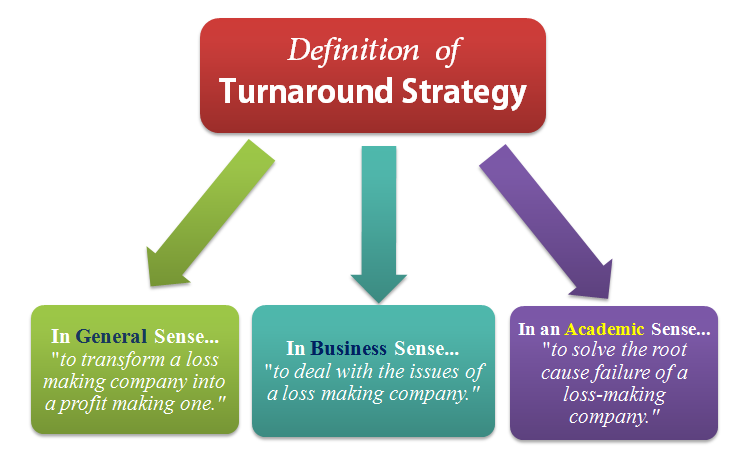Pretend for a moment that you have just been placed in charge of a sales organization which is underperforming. What would you do?
Since I have been in this position, I can tell you what we did in that instance. The answer revolves around four areas of assessment. These turnaround strategy steps will help you get your sales team back on track.

First, is an assessment of the competitive landscape and the nature of the products as they are at the present time. This is key and requires that you take an unbiased view of the market as it really is at this point in time. Where do we win and where do we lose today? Are we winning or losing on price, product features, delivery or some other metric? Much of a company’s success is determined by the sales department’s ability to win over new customers while maximizing revenues with existing clients. This is the number one imperative and, in a turnaround situation, immediate changes need to be made. If you have a robust data analysis/CRM segment to your business, then determining the reasons for your lack of sales should be fairly straightforward. If you don’t have this ability currently it would be wise to add it going forward.
Second, is an assessment of the existing sales management teams’ capabilities. For a moment think of a sales team as if it were an Army. In an Army, there are what are known as “peacetime” Generals and “wartime” Generals. Ulysses Grant and George Patton are examples of “wartime” Generals as they were made for the battlefield more than the barracks. They were masters of both conventional and unconventional warfare and committed to winning at seemingly all costs. In a turnaround sales situation, you will need a “wartime” Sales Manager. This person may not be the ideal candidate to run your sales team over the long run. But he/she will be exactly what you need in what is essentially a time of crisis. Sadly, many firms fail to see the criticality of the position they find themselves in before it’s too late. This is where it helps to have the ability to look at things with clear eyes. A Grant or a Patton type of sales manager will have no trouble looking into the abyss and quickly formulating a new strategy.
Third, is an assessment of the field sales personnel. When sizing up a sales team, I like to think of the various team members as either racehorses or mules. The racehorses are high strung and bursting with energy. These are the men/women best placed to introduce new products by challenging the conventional industry wisdom. The mules are the old school salesmen/women that are ideal for maintaining your market share. And make no mistake about it, you need both types of salespeople on your team if you are an established business. You definitely need them both if you are attempting to pull off a sales turnaround challenge. In this critical business phase, you will need to both find new revenue with your racehorses but also hold onto existing accounts with your mules.
Fourth, is an assessment of what is needed by the sales organization to achieve future long-term success from all areas of the organization (marketing, engineering, sales, manufacturing etc.). This is a product of what you have learned from the first three assessments. Trust me on this point. You can have the best sales team ever and you will fail if other parts of the company drop the ball. If engineering and manufacturing do not perform then the sales team is toast. Sales cannot work in a vacuum and pull off a successful turnaround. This is a good reason to have cross-functional meetings on a regular basis. In my experience, it has been very beneficial to have weekly meetings with each of the organizational teams represented. During these meetings, it’s helpful to have a recap of current operations, manufacturing, engineering, and sales initiatives. This should always be accompanied with sales numbers against the monthly forecast along with any challenges that need to be addressed.
In summary, I think you need to conduct a short-term triage to turnaround revenues immediately while planning for long-term success. Revenues are required to pay the bills and keep the lights on. Sales teams exist to generate revenues by selling the products/services produced by the company. There is not some higher goal. Again, selling makes it possible to pay salaries for everyone and also cover the other costs associated with running a business.
The challenges sales organizations face is dependent upon where they find themselves at any given point in time. In this regard, the person in charge of sales is one of the most important people within a company because this person is tasked with directing, creating and executing the sales strategy that ensures success. Good turnaround specialists are neither optimist nor pessimist. Instead, they are cleared eyed realist who has the ability to make business assessments quickly. The best of them have no allegiance to what has gone before as they are in no way invested in the past. They are completely focused on the here and now, and charting a winning path forward.
You can’t hope the plans happen; you have to make them happen.
In a turnaround situation follow the four-step process outlined above, much like a map, to lead you out of the wilderness.






